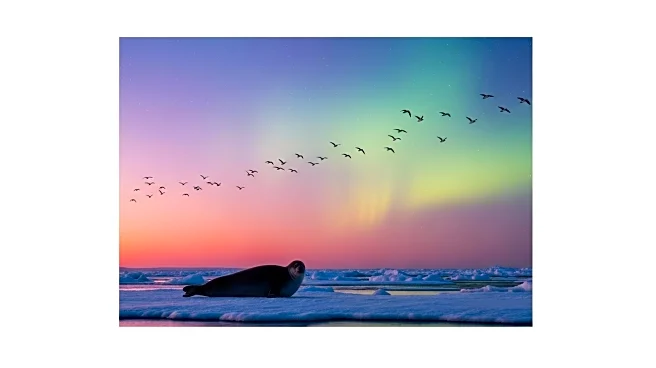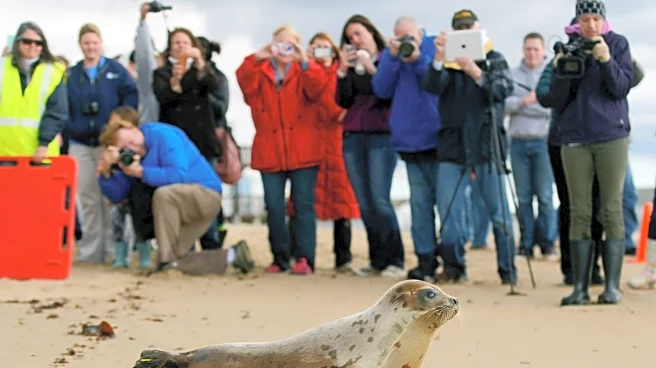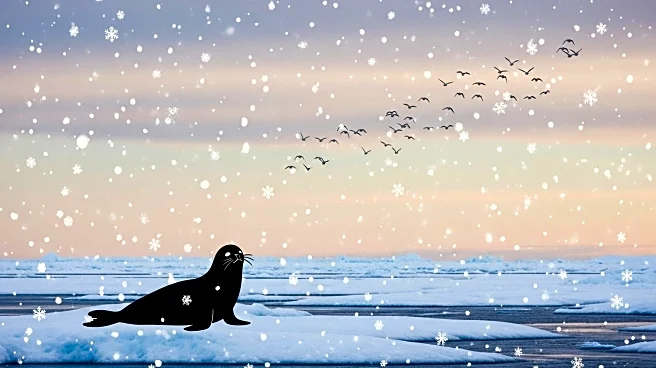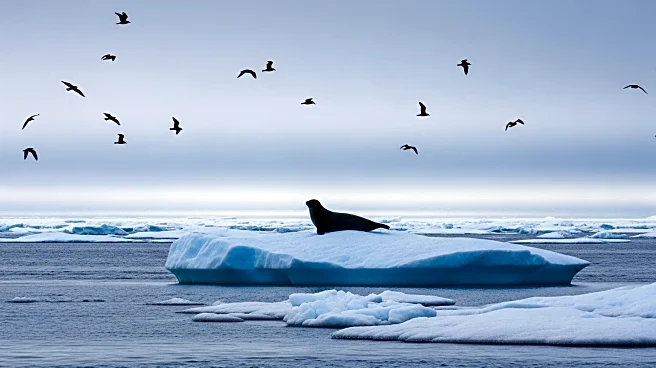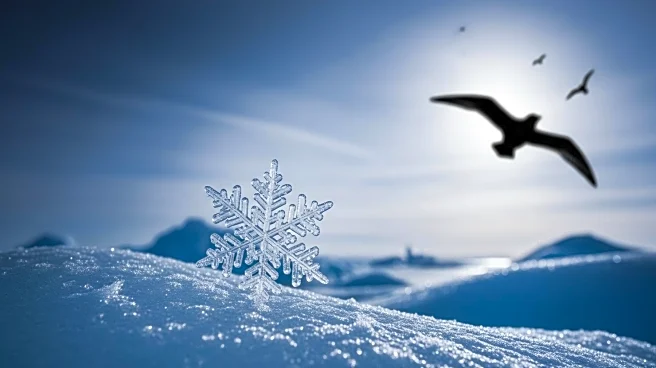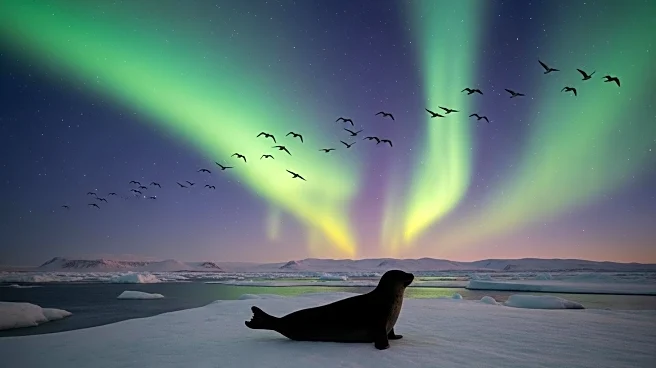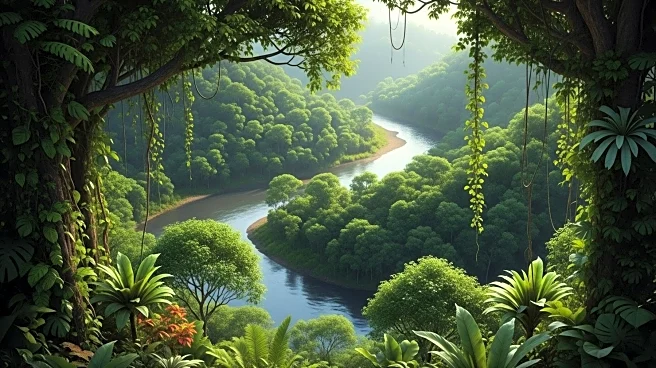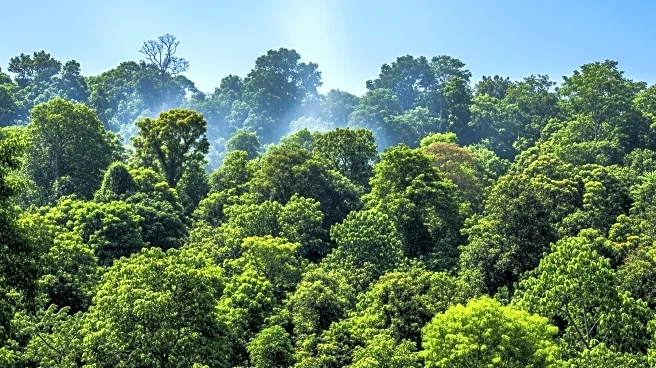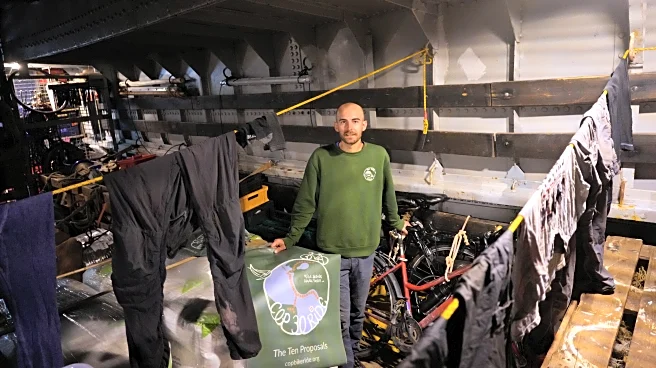What's Happening?
The International Union for Conservation of Nature (IUCN) has released its latest Red List of Threatened Species, revealing that Arctic seals and over half of global bird species are facing significant threats. The report highlights the impact of climate change on marine mammals native to the Arctic, such as seals, whales, and polar bears, which rely on sea ice for their habitat. The diminishing sea ice, attributed to human-caused climate change, poses a severe risk to these species. Additionally, the report notes that 61% of bird species worldwide are experiencing population declines, a significant increase from 44% in 2016. Factors contributing to this decline include deforestation, agricultural expansion, and climate change. The report also mentions several species declared extinct, such as the Christmas Island shrew and the slender-billed curlew.
Why It's Important?
The findings of the IUCN report underscore the urgent need for global conservation efforts to address the impacts of climate change and habitat destruction. The decline in bird populations and the threat to Arctic seals highlight broader environmental challenges that could have cascading effects on ecosystems and biodiversity. The report serves as a call to action for policymakers and conservationists to implement strategies that mitigate these threats. The success story of green sea turtles, which have rebounded due to conservation efforts, demonstrates the potential for positive change when dedicated efforts are made. However, the ongoing threats to other species indicate that more comprehensive and sustained actions are necessary to prevent further extinctions and preserve biodiversity.
What's Next?
The upcoming United Nations climate summit in November, to be held in Belem, Brazil, will focus on the Amazon and the importance of tropical forests. This event presents an opportunity for world leaders to address the environmental issues highlighted in the IUCN report. Conservationists and scientists are urging leaders to take decisive action to protect imperiled species and habitats. The report suggests that supporting sustainable choices, backing conservation initiatives, and holding leaders accountable for environmental promises are crucial steps in reversing the decline of threatened species. The success of green sea turtles could serve as a model for other conservation efforts, emphasizing the need for long-term commitment and funding.
Beyond the Headlines
The IUCN report not only highlights the immediate threats to species but also points to broader implications for global ecosystems and human societies. The loss of biodiversity can lead to disruptions in ecosystem services, affecting food security, water resources, and climate regulation. The report emphasizes the interconnectedness of human actions and environmental health, suggesting that efforts to protect wildlife are also efforts to safeguard human well-being. The ethical dimension of conservation is also evident, as the report calls for equitable distribution of conservation resources, particularly in poorer communities that are disproportionately affected by environmental degradation.

